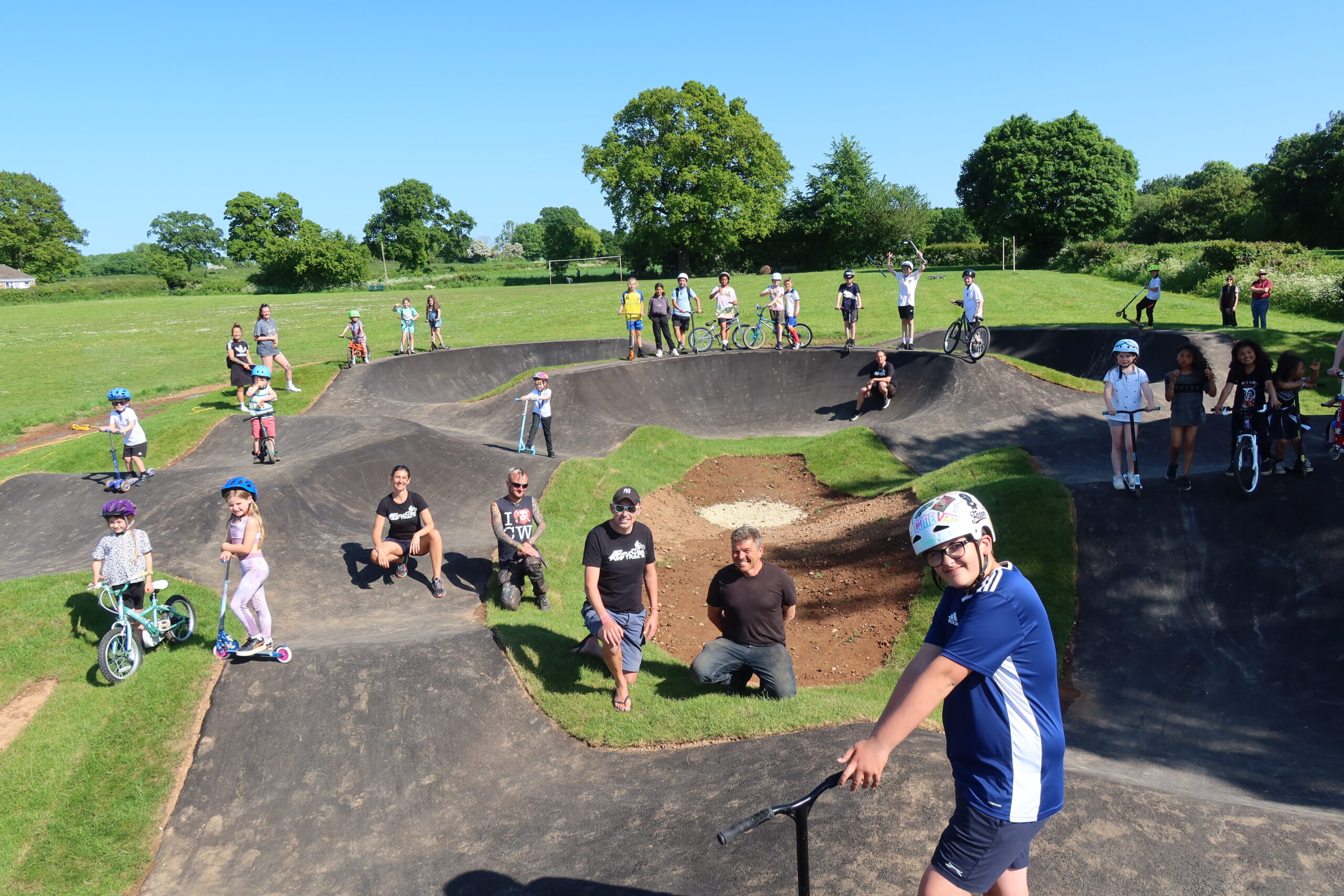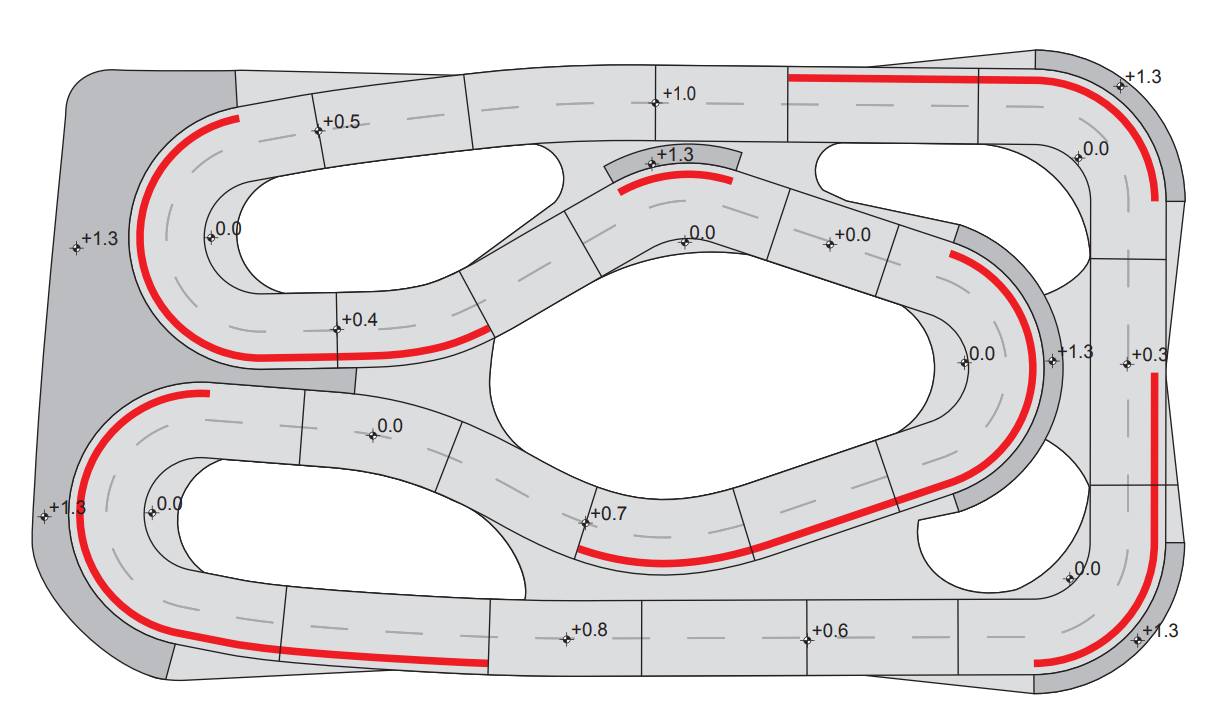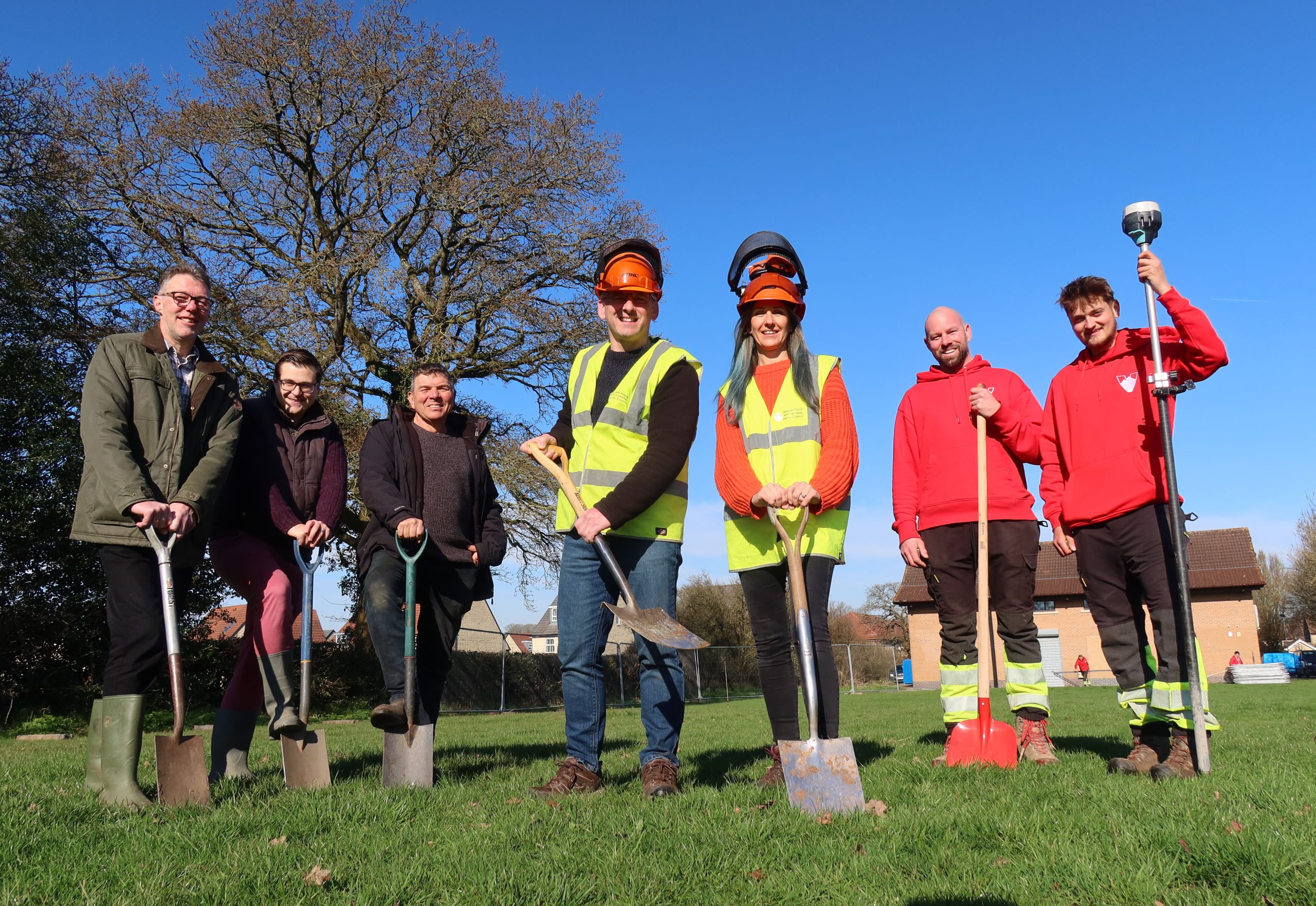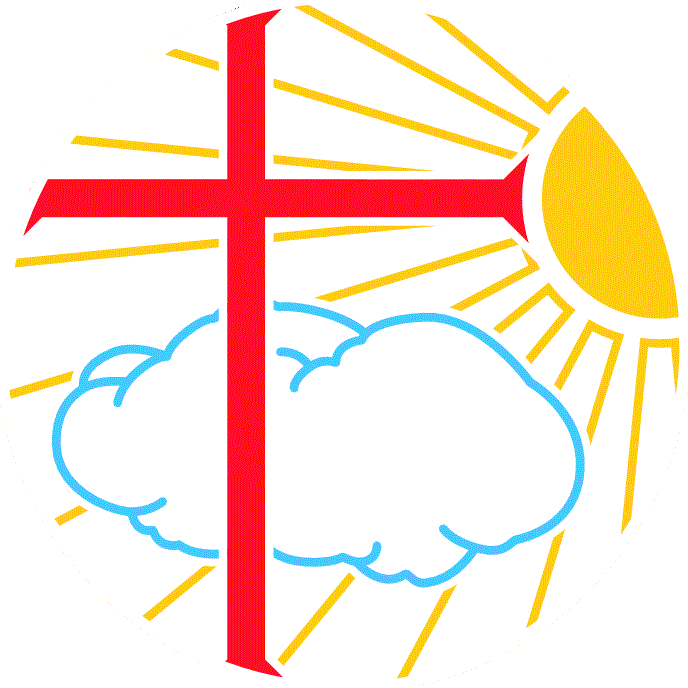Table of Contents
The Historian – A History of Local Occupations by Michael Flower
Part 1 – Bricks Wheels and Horseshoes
On the site of the Paulmont Rise estate a Brickworks was founded by Mr. Hippisley about 1860 and traded until about 1890. It was not a commercial success in the long term. The bricks would have been handmade and there would have been a pugmill probably horse powered, also making terracotta items such as rhubarb forcers. The fire clay for the venture came from a hole dug beneath the site and was left disused until World War 2 when it was used as an air raid shelter.
Every village needed a blacksmith and Temple Cloud was no exception. Records for a smithy go back to the late 18th Century where the smithy may have been sited on what is now Cameley Close. James Dudden occupied the site and then the property was leased on the life of Sarah Quarman aged 43 in 1798 and this may have been the site of the Quarman family’s clockmaking business.
By the mid 19th Century the smithy had moved to a building on the corner of Peterside and the road to Wells.
Thomas Kingman may have been the first blacksmith on this site followed in the 1860’s by John Gait. James Abbott was there in 1883 and by the turn of the century Ebenezer William Tiley was there as the last blacksmith, the business ceasing just after the war around 1920.
Whilst the premises remained empty for a number of years, they were eventually converted to a house. However, because the front door opened directly on to the road the house was difficult to sell so the owner, a Mr. Hawker let the property in 1927 and it was taken over by Mr Ernie Watts, who wanted larger accommodation so he moved his Newsagents and Confectionary business there and lived there with his family until his retirement when the property reverted back to being a private house.
The activities of a blacksmith fell broadly into three, shoeing horses, helping to made carriage and wagon wheels and small general jobs making and mending anything metal.
Horses that were to be shod were tethered in the outer part of the building before being taken to the inner part where the shoeing was done. There was a cobbled floor like a stable and the room was just high enough for the horses. There was a hole in the floor filled with tar oil used to be put on the horses hooves after shoeing. The horses were brought in from the local farms as well as from local residents who were wealthy enough to own riding horses or carts and carriages.
The making of wagon and carriage wheels also was part of the blacksmith’s job. The wheelwright, a skilled carpenter would make most of the parts of the wheel, and there was a wheelwright just across the road in the Woolhouse at Peterside. In the smithy was a circular stone place for a fire and the wheel to be fitted with its rim was placed in the centre of this then the iron rim was heated and as it expanded it could be placed over the wheel and then quickly cooled before the wood burnt and as it contracted it bonded the wheel together. This method of bonding wheels goes back to Roman times.
The blacksmith was the man who also made or repaired anything made of metal, such as fire dogs, bolts, riving knives, gates and hinges, oven shelves, nails, chains and chain links, shoe studs, making a new pair of lancewood shafts and fitting to a cart and other items too numerous to mention.
The village children were attracted to the smithy and were excited by this process. Mr Tiley allowed the children into the smithy, they enjoyed this especially on a cold winter day. They were allowed to play marbles on the floor if they swept it first, if there were no horses in there. Mr Tiley seems to have been a kindly old man in letting the children in. It is said he could whistle a tune and hum the bass at the same time, he also allowed the tramps passing to and from the nearby Workhouse to heat their billycans of water.
Part 2 – The Building Trades
But what of other trades? Given that the village was owned by the Hippisley family from Tudor times until 1919, the estate had workers who could do building repairs and construction together with help from outside contractors. This meant there was little need for small building businesses in the village. As far as Temple Cloud was concerned there was a workshop near The Green used as a base for the estate workers.
There were men who could do specialised tasks, for example, in 1803, a local man Valentine Dudden supplied timber for shutters for the belfry windows in St James Church, Cameley and these were made and fitted by Thomas Porch another local man. In 1807 William Lovell was paid for making the churchyard gates.
Towards the end of the 18th Century Valentine Dudden built the Temple Inn on the site of some old cottages and the Church and Poor House. Other local men were carrying out work such as repairing the Blind House and Lock Up for the Church Wardens in the period 1760 to 1880.
In the 1851 census there were four or five men quoted as being carpenters. One of these was John Maggs born about 1801 who is recorded in the census return as having a two-year-old son named Frederick. When he was in his late 30’s or early 40’s around 1880 Frederick Maggs had a carpenter’s and wheelwright’s business in the old wool sorting house in Peterside Lane. He was later joined by his two sons Cecil and Bert. Sadly, Bert was killed in the second world war, but Cecil, who was later joined by Cecil Smith, carried on a building business well into the 20th Century. As an elderly man Frederick has been pictured in his workshop surrounded by a collection of tools, the workshop being lit by an oil lamp as there was no electricity there until the 1920’s or 30’s. Frederick was variously described as a “discontented” character but compassionate, seeming to put his charges at a level his customers could afford dependant on their circumstances.
In 1921 John Osman, who was previously Henry Hippisley’s agent came to Temple Cloud and purchased the land and buildings previously used as the Temple Cloud Fireclay Works. He built his house, Paulmont House on the site and foundations of earlier buildings.
He set up a saw mills here and did a lot of building work in the area. Sometimes he would borrow the money, repaying it when the buildings were sold or let.
He built the houses in The Square, Paulwood Road, Cranmore View, and some bungalows in Cameley Road.
Part 3 – Butchers
Turning to other trades and occupations, at the end of the 18th century a butchery business was run by a Mr William Allen in a property at the north end of Temple Cloud. Little is known of this business. Of course, there were local farmers who would have sold meats from their animals and it is not until about 1851 that a specialist butcher came to the village, a Mr. John Beak who employed a labourer and a servant with Mr Beak and his wife farming eight and a half acres. The family seem to have lived near Eastcourt somewhere near the Skinhouse which was by the side of the River Cam.
Towards the end of the Victorian era in 1885 Alfred Chivers, a miller/baker and his wife Louisa sent their eldest son William John Chivers to be apprenticed to a butcher in Weston Super Mare where he stayed for some years, marrying Bessie Amelia Pleass. Their first children William and Albert were born there and soon afterwards the family moved to Rose Cottage, Temple Cloud, where Percy, Elsie, Clifford and Bertram were born followed some years later by Lilian.
Around 1900 William John Chivers sold meat in a butchery business within the bakery where his parents still lived and where his brother Alfred had his bakery. William was not permitted to build his own premises for a butchery business but in 1906 the Hippisley estate had a premises built housing a shop, slaughter house and living accommodation constructed by the firm of Flowers of West Harptree which was then rented to William for his business. There was some land at the rear where Mr Chivers would temporarily graze animals he had bought at Farrington Gurney market.
The premises were built on the site of a small brewery run by Mr. Thomas Seviour of whom more later.
William ran the business until just before the Second World War when he handed it over to his children Clifford, Bertram and Percy who continued in the business until their retirements and the business was wound up in 1973 and disposed of to Clothiers of Ston Easton.
William Chivers was able to buy the shop premises when the Hippisley Estate sold the village in 1919 together with the four adjacent cottages and land behind and opposite known as Gillett’s Hill. On the latter piece of land, he had built two pairs of semidetached houses and a bungalow, one for each of his children with Clifford living at and running the shop.
It is said that William Chivers made faggots and supplied them to the tramps in lieu of the bread and cheese to which they were entitled on the special meal tickets issued to them when they left the Clutton Union Workhouse.
While still living at Rose Cottage, William Chivers displayed his meats and pies in the window of the house now known as Myrtle Cottage. In hot weather, it was said that he kept the meat in a well at Rose Cottage to keep it cool, as this was in the days before refrigeration.
In the First World War, there were German prisoners of war billeted at Hallatrow Court. They were hired out to local farmers and Williams Chivers hired 4 or 5 over a period of time lopping trees and hedging, adding to their rations with faggots and the like.
The shop was lit by an oil lamp hung from the ceiling and during the First World War men from the village would sit on the shop windowsills talking.
Mr. Chivers owned a couple of horses, a little brown mare and a larger grey horse which mostly used to pull the butcher’s cart around the neighbouring villages to sell his meat, he also had a governess trap. Subsequently deliveries were made in motor vans.
He was also one of the first owners of a wireless in the village and his family would spend interesting evenings listening to 2LO.
The Chivers family served the village for many years as regular suppliers of fresh meat in the days before fridges and freezers.
Part 4 – Medical Practitioners
Temple Cloud has for many decades been fortunate in having a doctor’s surgery in the village usually sighted in the area of the Green. The building we see today is a face lift and improvement on the site of the previous surgery that was linked with Humphreston House.
In 1777 a Dr. James Hart was paid eight shillings and six pence for attending one of the Quarman family
In 1812 two doctors, Jones and Crang are shown in records as “tending the poor” and may have been here as early as the mid 1790’s. Extracts from The Poor Book for the period show a number of payments to Dr. Jones for tending the poor of Cameley over that period with a number of payments to Eleanor (Nelly) Sage for various procedures that were probably of a nursing nature. Entries in the Poor Book also refer to supplying bottles of Daffy’s (gin) to various individuals, something we no longer get on the NHS!
Moving on to Victorian times, James Dudden Perrin, M.R.C.S.Eng. was the doctor from 1851 when he was 33 years old, to 1897. In Kelly’s Directory of 1883 he was described as “Surgeon, Medical Officer and Public Vaccination Officer, Cameley District and Clutton Union”. The proximity of the Clutton Union Workhouse may be a reason why the doctor was located in Temple Cloud. Dr. Perrin was an early bird and often started his surgery at six in the morning. His rounds were done in a horse and cart but it frightened children when he used a chain on a stick to drive the horse. He was kinder to his patients we hope. He is thought to have occupied Stanley House with a surgery accessed from the rear of the building and on retiring moved to Corner House. One story is that Dr. Perrin joined forces with Mr. W. Chivers, the butcher and they tried to boil a whole horse in an attempt to get a skeleton. The outcome of this venture is not recorded.
Then came Theodore Martin who stayed until 1919. He was also described as Surgeon and Medical Officer for Clutton Workhouse District and Clutton Union. He was also on the original committee of the Temple Cloud Mutual Improvement Association where in the year 1894, when still Mr. Martin, he was a vice-president.
Whilst he held a morning surgery he was keen to get out on his rounds to see his patients. When he first started here he also did his rounds in a pony and trap using a pony and sleigh in the snowy winter days to make sure he got to his patients. However, Dr. Martin was one of the earliest car owners in the village but was chauffer driven. In the winter the doctor and driver were dressed in huge coats and rugs to keep warm in the open car, the driver used to nearly freeze sitting in the car outside the patients’ houses while doctor was making his call. In July 1919 it is recorded that Dr. Martin bought Humphreston House in the Hippisley sale for £1050. He had patients as far away as Ston Easton and had a ‘brusque’ manner that meant that children were rather afraid of him. He married a French lady and they had three daughters.
He was replaced by Dr. Vaughan who stayed until the mid-twentieth century.
He was followed by James Fleming who stayed until his retirement. He was the first doctor the writer can personally remember. The Surgery was entered up a flight of stone stairs from the pavement, which are still visible adjacent to Stanley House. At the top of the stair case one entered the building and turned right to face a corridor. The first door on the left was the waiting room with two or three hard wooden benches, with only a high window. There were two other rooms. The next was a dispensary and the last one the surgery with a window looking across the garden towards Peterside and Mendip. The rooms were separated by wood panelled walls, not entirely soundproof! If not busy Dr. Fleming would visit patients even if he had not been called, just to make sure they were alright, he was very popular.
On his retirement James Fleming moved to Wells. Neil Marshall was the last doctor before the surgery was re-organised leading to the arrangement we have today with a number of doctors sharing the practice between Cameley and Harptree.
- Posted: 12th November 2020






